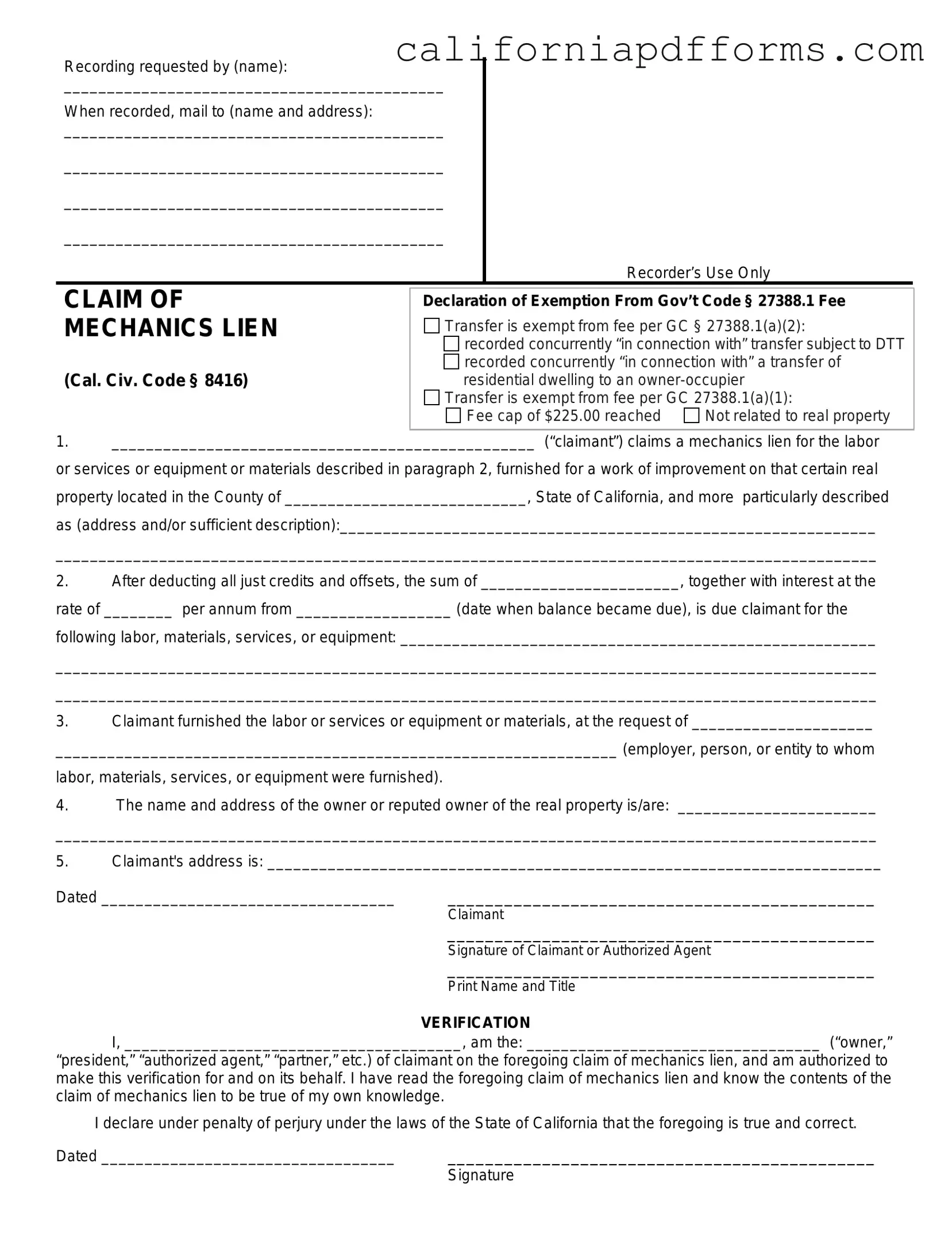What is a Mechanics Lien in California?
A Mechanics Lien is a legal claim against a property that is filed by contractors, subcontractors, or suppliers who have not been paid for work performed or materials supplied in relation to that property. This lien serves as a way to secure payment and can ultimately lead to a foreclosure on the property if the debt remains unpaid. The purpose of the Mechanics Lien is to protect the rights of those who contribute labor or materials to a construction project.
Who can file a Mechanics Lien in California?
In California, various parties involved in construction can file a Mechanics Lien. This includes:
-
General contractors
-
Subcontractors
-
Material suppliers
-
Laborers
Each of these parties must meet specific criteria and deadlines to ensure their lien is valid. It is crucial for those considering filing a lien to understand their rights and obligations under California law.
What are the steps to file a Mechanics Lien in California?
The process of filing a Mechanics Lien in California involves several key steps:
-
Determine eligibility: Confirm that you are entitled to file a lien based on your role in the project.
-
Prepare the lien: Complete the Mechanics Lien form, ensuring all required information is accurate and complete.
-
File the lien: Submit the completed form to the county recorder's office in the county where the property is located.
-
Serve the lien: Deliver a copy of the filed lien to the property owner and any other relevant parties.
-
Monitor deadlines: Keep track of any deadlines for enforcing the lien, as these can vary based on the circumstances.
Following these steps carefully is essential to ensure that the lien is enforceable and protects your rights.
What are the time limits for filing a Mechanics Lien in California?
In California, the time limits for filing a Mechanics Lien depend on the type of claimant:
-
General contractors have 90 days from the completion of the work.
-
Subcontractors and suppliers must file within 90 days of the completion of their work or delivery of materials.
-
Laborers have 90 days from the last day they worked on the project.
It is important to adhere to these deadlines, as failure to file within the specified time frame can result in the loss of the right to claim a lien.
What happens after a Mechanics Lien is filed?
Once a Mechanics Lien is filed, several outcomes may occur:
-
The property owner may choose to pay the outstanding debt to have the lien released.
-
Negotiations may take place between the parties to resolve the payment issue.
-
If the debt remains unpaid, the lienholder may initiate foreclosure proceedings to sell the property and recover the owed amount.
It is advisable for all parties involved to seek resolution as soon as possible to avoid lengthy and costly legal processes.
